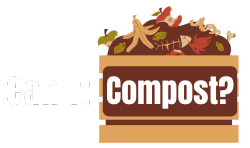Can I Compost Newspaper?
Newspaper is a great addition to your compost pile because it's a readily available, carbon-rich material that helps balance the nitrogen-rich "greens."


Sourced & Cited
Newspapers are a common household item that can easily be added to your compost. They break down relatively quickly and help maintain the proper carbon-to-nitrogen ratio in your compost pile. Remember to avoid glossy inserts or those with colored inks, as these can be problematic.
Compost Classification
Brown (Carbon-rich): Newspaper is primarily composed of cellulose fibers, making it a dry, carbon-rich material ideal for balancing the moisture content of a compost pile. Its relatively low nutrient content and dry texture facilitate the decomposition process by providing a stable carbon source for microorganisms.
🏷️ Tags
Important characteristics to know about this item:
Breaks Down Quickly Use in Moderation Pest Attraction Risk Avoid if Treated/Coated
⚠️ Potential Risks
- Ink transfer to compost (though minimal with newspaper inks and usually not a problem for most plants): some inks can be toxic to plants or slow decomposition
- Potential for attracting pests if large quantities of unshredded newspaper are added, creating overly dry or dense areas
- Slow decomposition if not properly shredded or layered with other materials
💡 Best Practices
- Tear or shred newspaper into smaller pieces (about 1-inch squares) for faster decomposition and better mixing with other compost materials.
- Layer newspaper evenly with other "green" materials like food scraps to achieve a balanced carbon-to-nitrogen ratio and ensure even decomposition.
- Avoid adding excessive amounts of newspaper at once, as this can create overly dry areas in your compost pile, hindering decomposition.
- Monitor your compost pile regularly to ensure that the newspaper is decomposing properly and doesn’t create a dry or dense core
